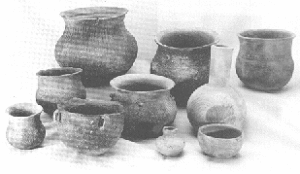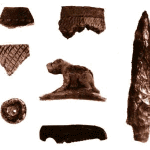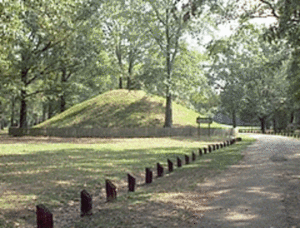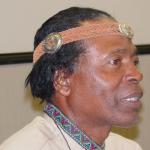AVOYEL-TAENSA HISTORY
From Historical times to the late 1800s the Avoyel Natives lived at the main village, which extended from where the State Commemorative Area in Marksville, Louisiana is located today to a place called “Les Rapids” where the City of Alexandria is today.
The Avoyel Natives acquired their name “Avoyel” because it signifies “People of the rocks” which was very likely applied because they were the middlemen in supplying the Gulf Coast Tribes with. the Flint rocks. They were producers and traders of stone projectile points (which was used for knife blades and arrow and spear heads). The Avoyel Natives never traveled far from their home territory, therefore they became traders with the other Tribes after European contact.
The Avoyelles were able to gain wealth and power through trading horses and cattle imported from Mexico and Texas. The trading role of the Avoyel Natives was reinforced by their location. It was the Avoyel Territory, in later years, that constituted the land bridge which was a constriction of the drainage system across the swamps West of the Mississippi River. This land bridge is what horses and cattle stolen from Spanish Texas were driven East on. The Tassenocogoula (our name in the Mobilian trade language meaning Flint People) is now perpetuated in that of Avoyelles Parish, Louisiana. Iberville first mentions the Avoyel-Taensa in 1699-1700 when he calls the the “Little Taensa”. At this time, according to Iberville, the Avoyel-Taensa peoples numbered about 280 people with around 40 of them being warriors.
TRIBAL GOVERNMENT
In historic times a Tribal Chief was the leader of the Tribe. The Tribe was divided into Clans with each having a Clan Chief. Today a Clan Leader is a Tribal Council Member. The Council is the Governing Body of the Tribe. They pass and enforce Tribal Law among the Clans. They are headed up by the Tribal Council Board which consists of four members . We have written and enacted a Constitution and a set of By-Laws which governs our Tribe and is what we live by. Anyone who is caught endangering this Tribe will be brought before the Tribal Council for review of their actions and they may face charges as well. If found guilty, they may be banished and turned over to outside authorities, if necessary.
THE AVOYEL-TAENSA TRIBE TODAY
In earlier times, the Avoyel-Taensa people lived in Clans and seemingly lived separate and different lives from each other. The children were taught by their elders and most did not attend any type of school because they were not considered an equal by the white people. They were discriminated against and degraded openly. For these reasons, most of our ancestors were unskilled laborers. Many of our elders have memories of the past that they have kept secret and are only now willing to share. They have preserved a wondrous and beautiful culture and have handed it down to us. With the progression of time, some people began to accept races other than their own. The discrimination is beginning to cease in its ability to rule people’s minds. Our children are now allowed to get a proper education. Since the early 1970s, Clans have been coming back together. Today we have nine Clans in the Avoyel-Taensa Tribe and have bonded together to further protect our culture and to also teach others about our remarkable heritage.
Approximately 95% of the Avoyel-Taensa Tribe live in the State of Louisiana with about 90% still living in Avoyelles Parish.






